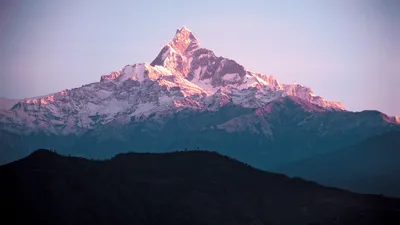mistressesanonymous.com – The Himalayas, known as 喜马拉雅山 in Chinese, is one of the most awe-inspiring mountain ranges in the world. Stretching across five countries—India, Nepal, Bhutan, China, and Pakistan—this towering range is home to some of the highest peaks on Earth, including Mount Everest. Here’s an exploration of the various facets of the Himalayas, from their geographical significance to their cultural impact.
Geographical Significance
The Himalayas span approximately 2,400 kilometers and play a crucial role in influencing the climate of the Indian subcontinent. They act as a natural barrier against cold winds from Central Asia, contributing to the monsoon season that is vital for agriculture in South Asia. The range is also the source of some of the major rivers like the Ganges, Indus, and Brahmaputra, which support millions of people with water for drinking, irrigation, and power generation.
Ecological Diversity
The Himalayas boast a rich biodiversity, with distinct ecosystems ranging from lush subtropical forests to alpine meadows and barren tundra. This diverse environment is home to a wide variety of flora and fauna, including many endangered species such as the snow leopard and the red panda. Conservation efforts are critical in this region to preserve its unique habitats and the wildlife that depends on them.
Cultural and Spiritual Importance
For centuries, the Himalayas have held significant cultural and spiritual value. Countless pilgrims visit sacred sites nestled in the mountains, such as the temples of Kedarnath and Badrinath in India, and the Potala Palace in Tibet. These mountains are revered in various religions, including Hinduism and Buddhism, where they are often seen as a symbol of spiritual ascent and enlightenment.
Adventure and Exploration
The Himalayas are a magnet for adventurers and explorers from around the globe. Trekking routes like the Annapurna Circuit and the Everest Base Camp trek offer breathtaking views and challenging terrains. Mountaineers are drawn to the peaks for the ultimate adventure—scaling the formidable Mount Everest or other towering summits.
Challenges and Conservation
Despite their grandeur, the Himalayas face numerous challenges, including climate change, deforestation, and pollution. Glacial melting poses a threat to water resources and increases the risk of natural disasters like floods and landslides. Efforts are underway to address these issues through sustainable practices and international cooperation to ensure that the Himalayas continue to inspire and support future generations.
In conclusion, the Himalayas are not just a stunning geographical feature but a vital component of the Earth’s ecosystem and a rich source of cultural heritage. Their towering peaks and lush valleys continue to captivate the imagination of people worldwide, reminding us of the beauty and fragility of our planet.

